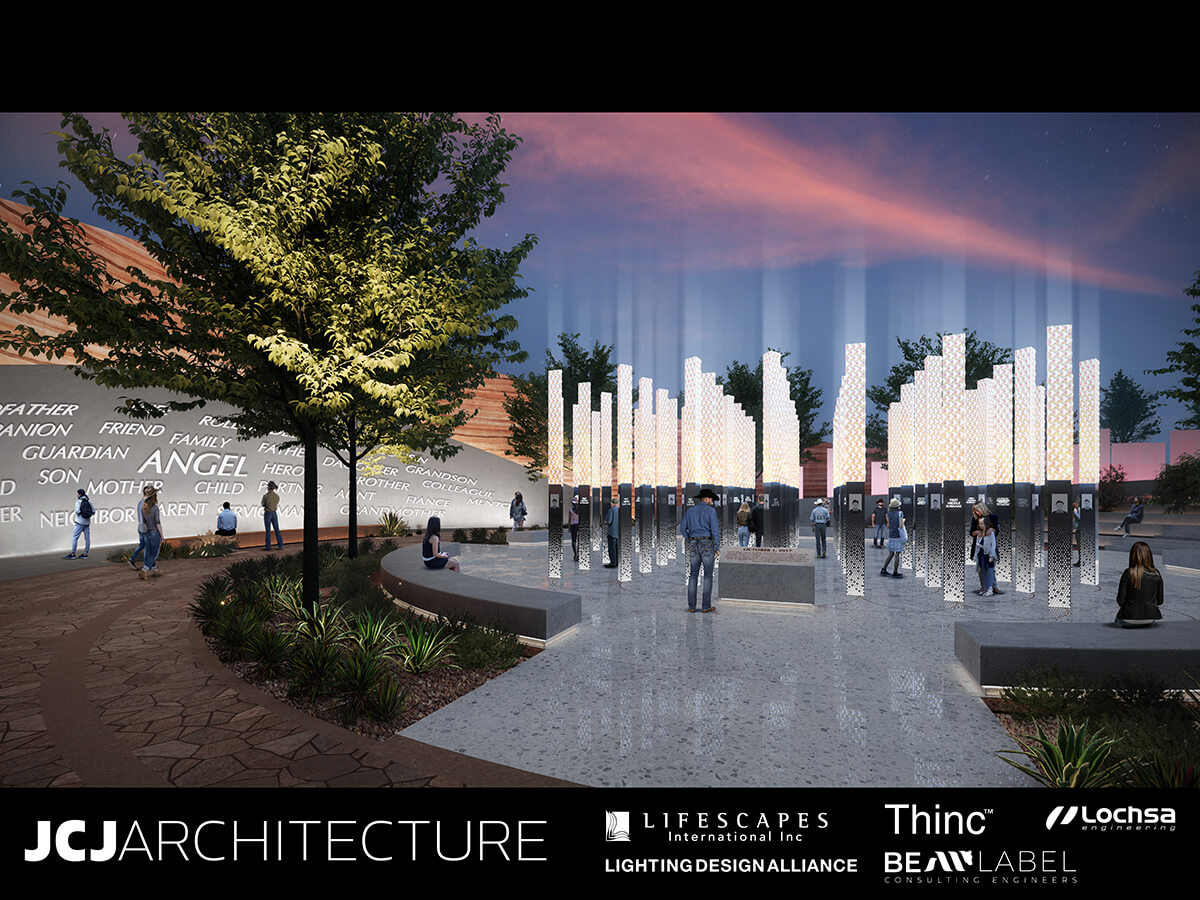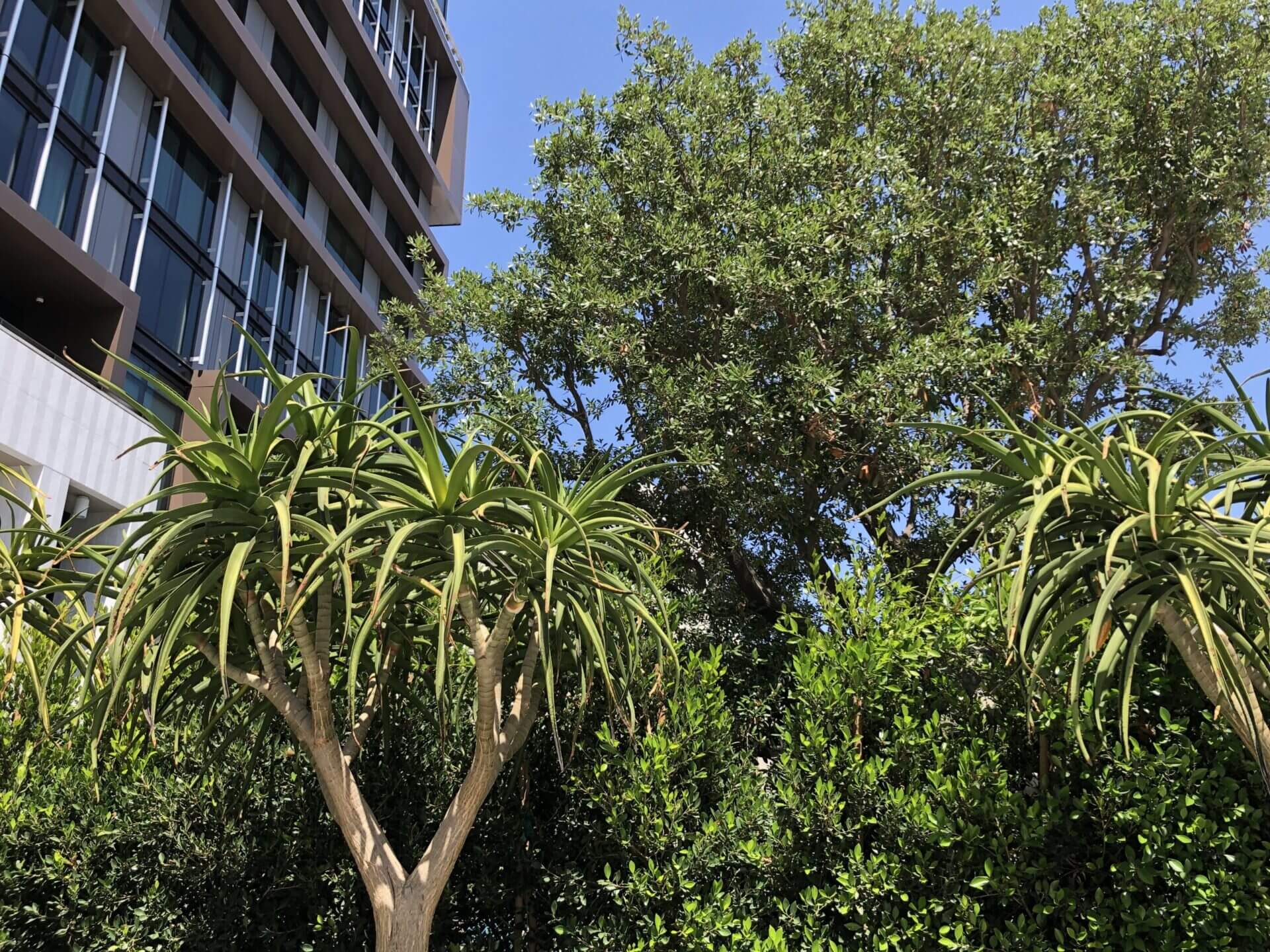There are certain times of the year that a garden can really come alive. Recently, I was fortunate enough to see this at one of our completed projects, Beijing Demesne, a luxury residential project 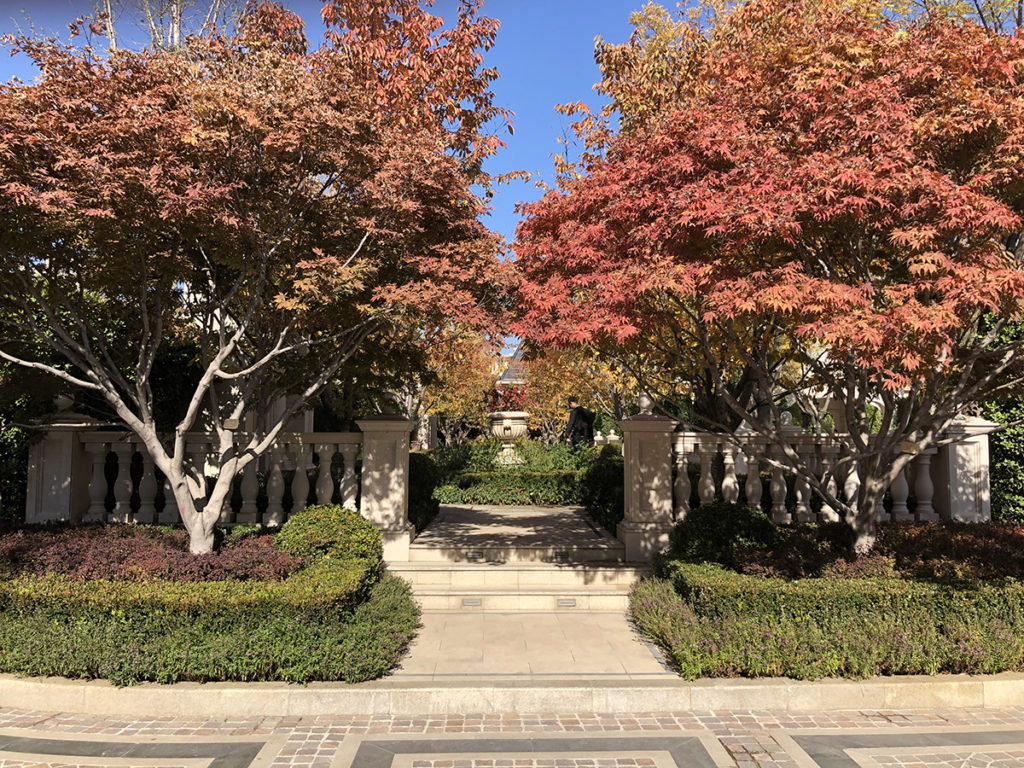 that we designed in Beijing, China. I have seen this project many times over the last couple of years, but never when the leaves were changing. I am so glad that I did! It reminded me of how a thoughtful landscape design can show you so many faces over the year, and encourage visitors to return time and time again. It also got me thinking about why it is such an important factor to consider.
that we designed in Beijing, China. I have seen this project many times over the last couple of years, but never when the leaves were changing. I am so glad that I did! It reminded me of how a thoughtful landscape design can show you so many faces over the year, and encourage visitors to return time and time again. It also got me thinking about why it is such an important factor to consider.
Landscape design is about planning for change, whether that transformation is for a purposeful activity in the built environment or seasonal variations. Considering this acknowledges the inherent nature of plants as ephemeral living things that can be the main focus, or a supporting player in the landscape we create. This is true year-round, but the fall and winter are really times where color in planting, or the absence of it, can put a new face on the garden. Transitioning to the cooler seasons, as flowers wither and leaves begin to drop, doesn’t have to mean drab and lifeless gardens. Designing impactful and memorable landscapes requires a careful and conscious consideration of the colors that different deciduous trees can take on and how they can be arranged with evergreen planting for the greatest effect. This ever-changing and entertaining display of nature allows the landscape to become a part of guests’ or residents’ lives as they move throughout the year.
Roger Voettiner, our VP of Horticulture, believes in “thoughtfully designing for seasonal variations, so the planting is as vibrant and eye-catching in fall as it is in summer. Cooler weather brings out the colorful hues of red, orange and yellow but then creates an entirely new palette as we move into warmer seasons.”
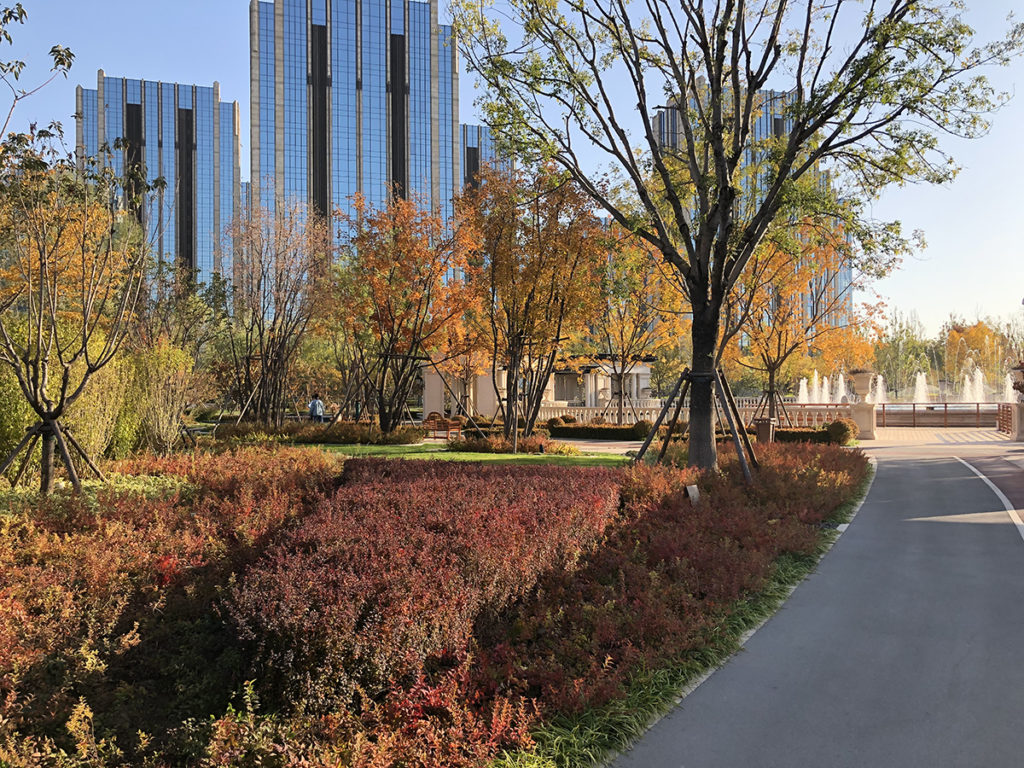 Of course color can be augmented through annual color planting and change-out gardens, but the best designs incorporate it into the permanent framework of the built landscape. Trees are what most people notice first when entering a garden and can provide color in a variety of ways. The bright green new buds and leaves of deciduous trees make for a wonderful patinated landscape in the spring and summer, along with flowering trees and shrubs, but offer so many possibilities in the fall. Especially in northern climates, deciduous trees known for their fall colors, such as Poplars, Ginkgos and Maples, can continue this colorful pageant. Not to be outdone, there are also shrub varieties that lend diverse colors to the scene, not through flowers, but rather leaves of red, orange and burgundy all year long.
Of course color can be augmented through annual color planting and change-out gardens, but the best designs incorporate it into the permanent framework of the built landscape. Trees are what most people notice first when entering a garden and can provide color in a variety of ways. The bright green new buds and leaves of deciduous trees make for a wonderful patinated landscape in the spring and summer, along with flowering trees and shrubs, but offer so many possibilities in the fall. Especially in northern climates, deciduous trees known for their fall colors, such as Poplars, Ginkgos and Maples, can continue this colorful pageant. Not to be outdone, there are also shrub varieties that lend diverse colors to the scene, not through flowers, but rather leaves of red, orange and burgundy all year long.
Of course the plants you use and the way you approach them depend a lot on the climate you are in. Not in a region with such discernible seasons? Even in a place like California there are a handful of trees, like Liquidambar, that can still kick in a bright shock of fall color. Deciduous trees also enable you to shade an area or walk from the intense heat exposure in the warmer months, but then open it up to the sun’s rays in the colder months of the year when the leaves have fallen.
So what happens to the overall design in the winter when the deciduous trees are bare? The non-deciduous and evergreen trees that you add to the garden palette create a structure to your outdoor spaces, like a green backbone, as the deciduous trees morph around them.
Lifescapes uses this philosophy on all of its projects, but here are some that come to mind that really showcase it well:
Beijing Demesne, of course, where the northern climate of China and the cultural dislike of using evergreen trees in the foreground combine to create an intensely layered fall experience.
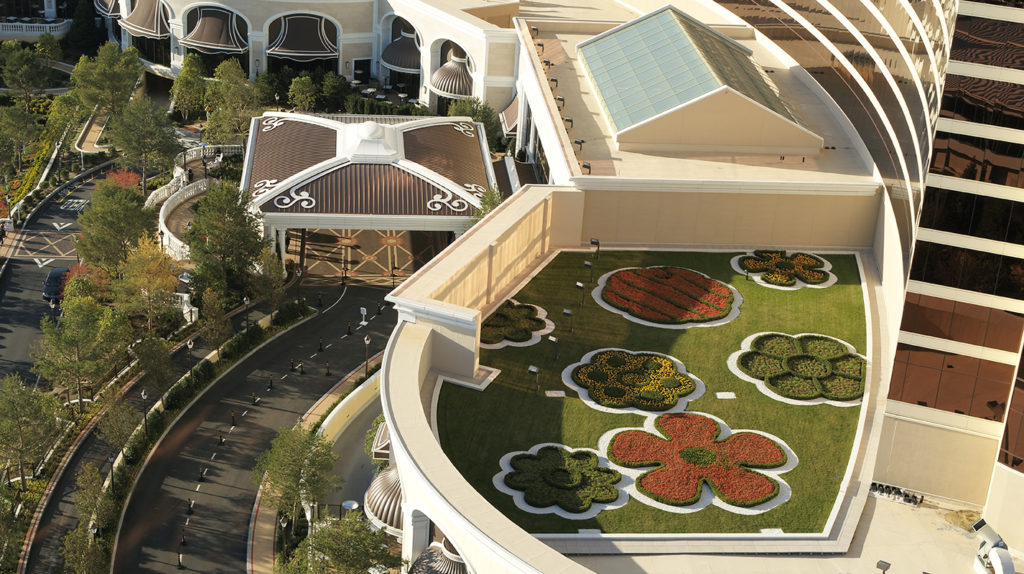
Encore Boston Harbor, is an excellent example of mixing flowering trees and shrubs within an evergreen structure. The majestic spruce-lined Oak Plaza promenade features Nellie Stevens holly, and fully-grown Japanese maple trees surrounded by flower beds with seasonally changing color in a lush, park-like setting. Flowers and annual color that can survive cold climates are grown in Canada and shipped to Boston for the sole purpose of being swapped out every few weeks to keep everything lush through the harsh winters.
Another example is The Village at Meridian, with its stunning, majestic colorful maple trees which were brought in from Canada and 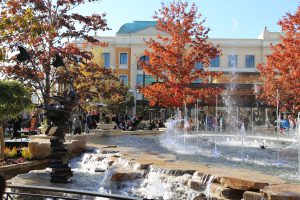 have become a signature piece of the property.
have become a signature piece of the property.
What we strive for is to not simply design a space that’s arranged well or aesthetically pleasing, but to go further and create a space that people want to inhabit and enjoy time and time again. Introducing plants that change color with the seasons is critical to connecting people with the evolving landscape in an emotional way. Whether quiet or dramatic, this change is memorable and drives an interest to return to see what could be in store next. It definitely was for me on this trip!

